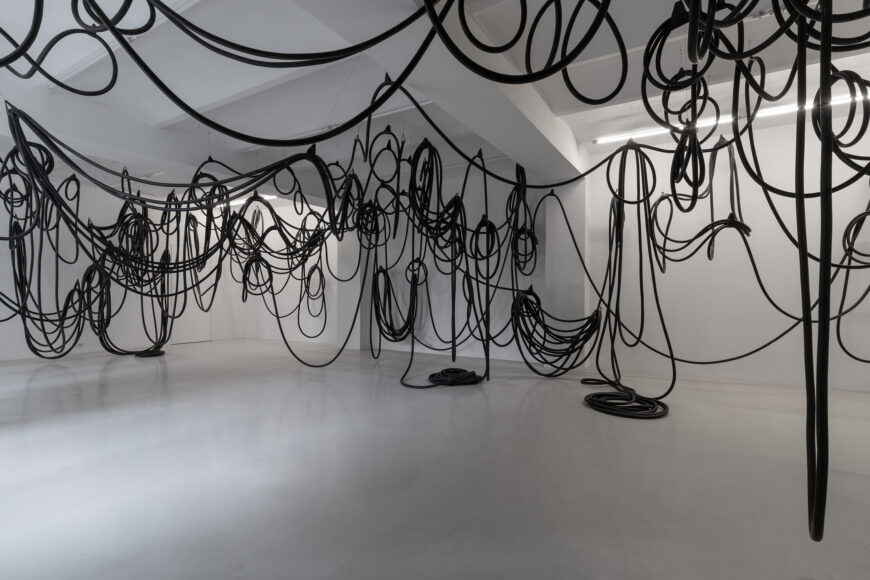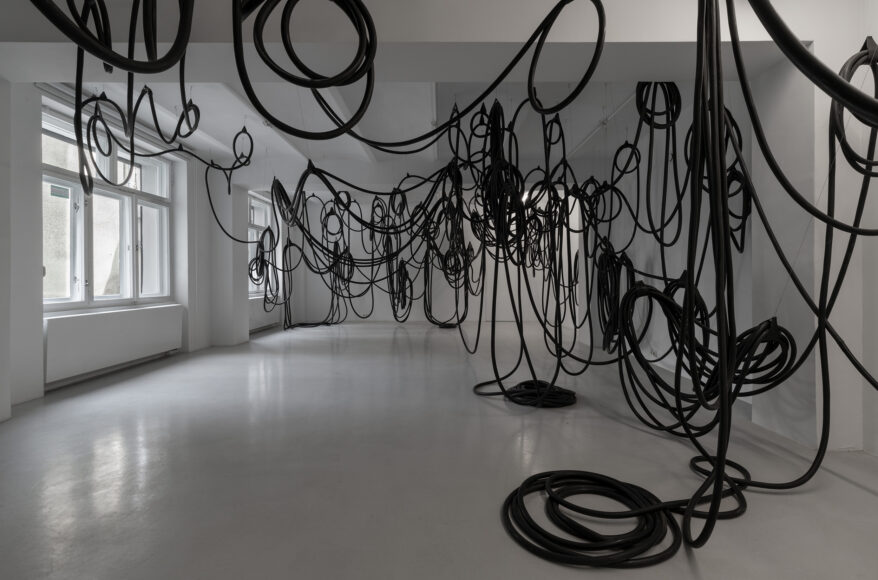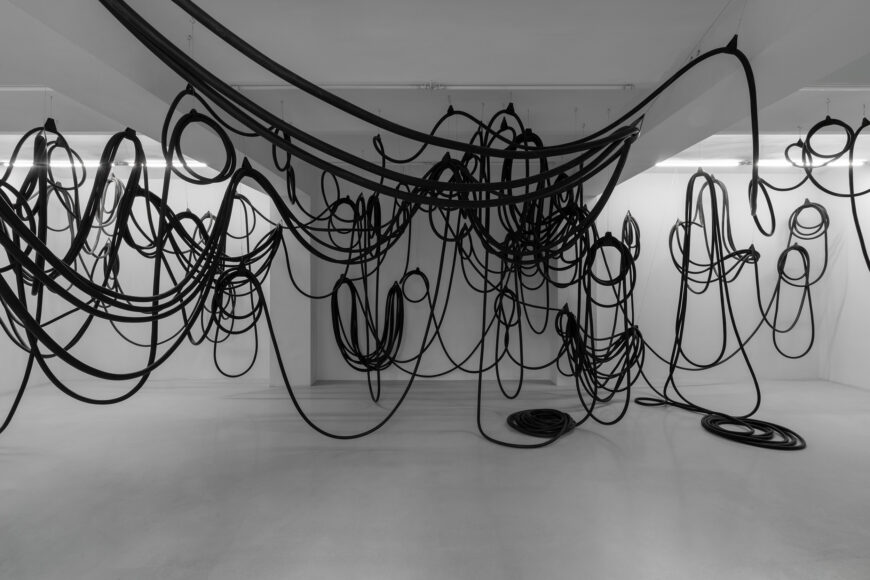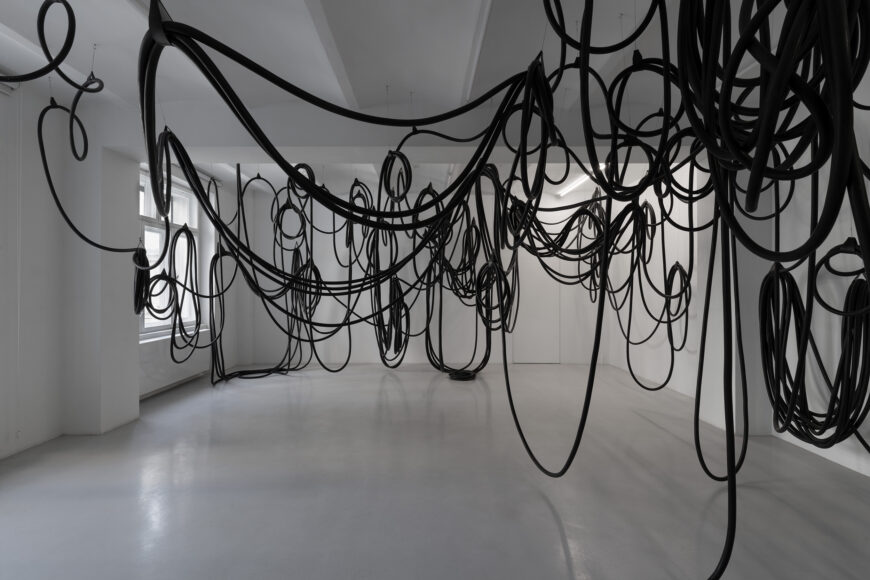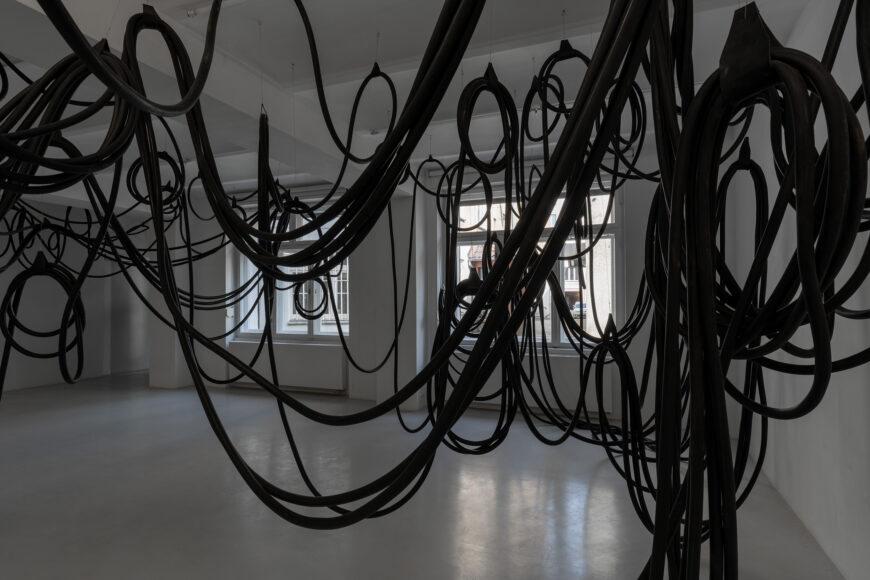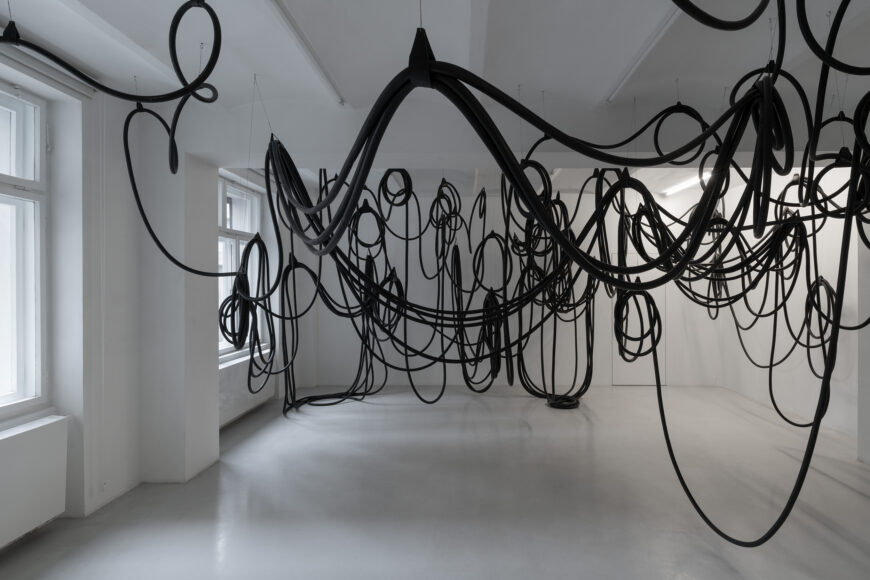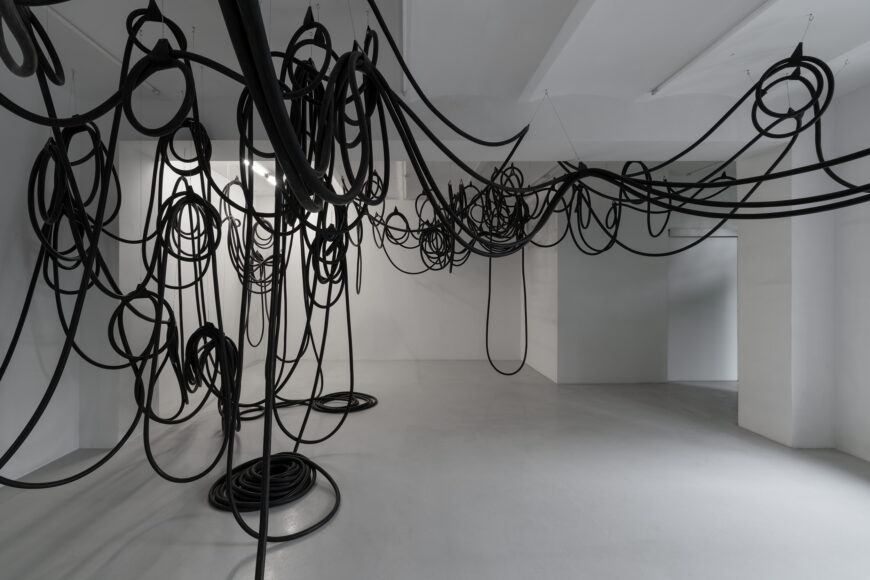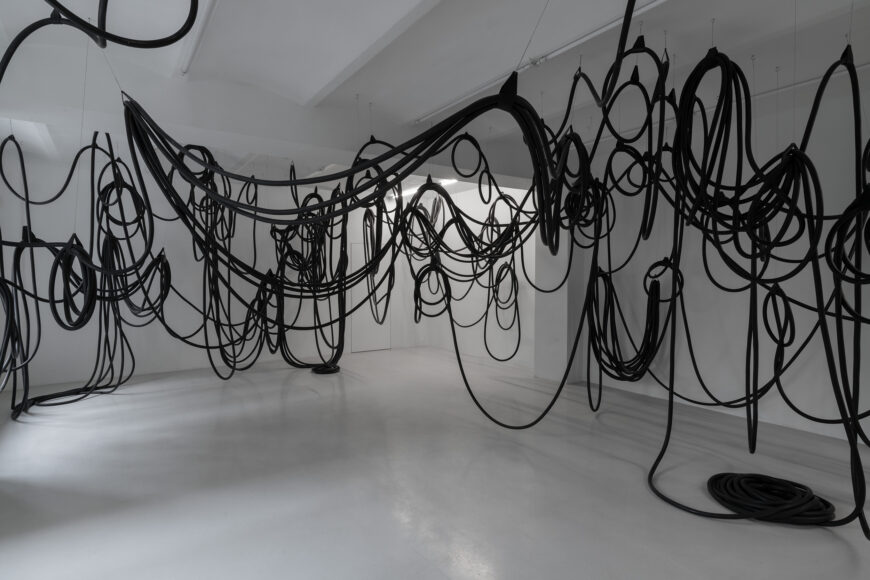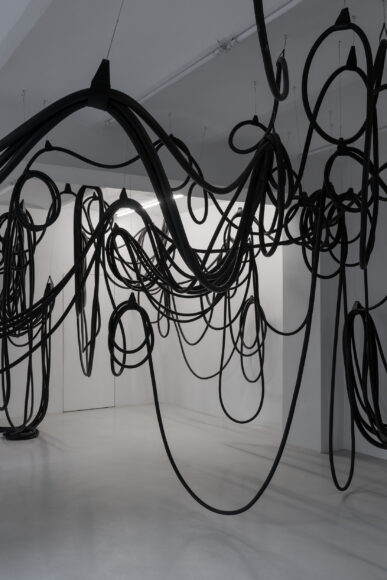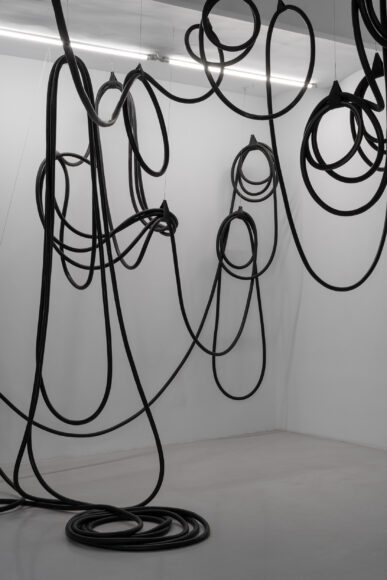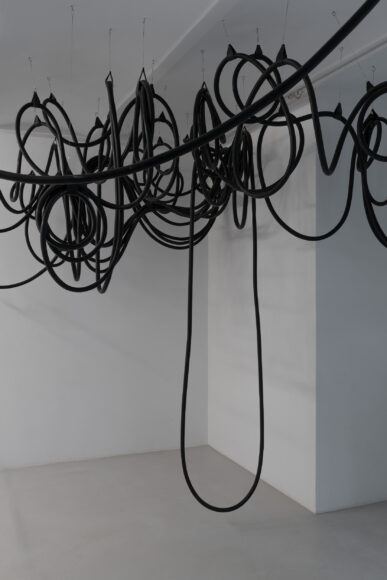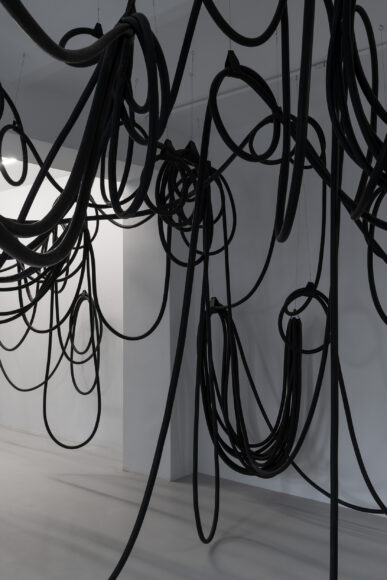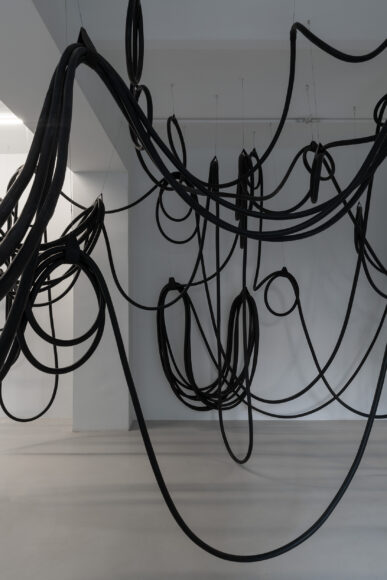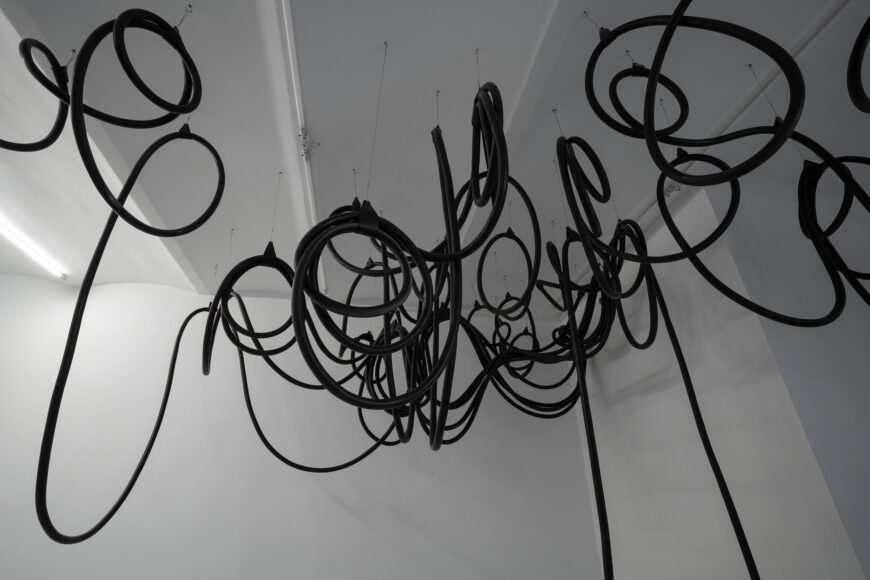Iza TarasewiczNew Darkness 23.03 - 1.06.2024
finissage: 1.6 Saturday, Stay for dinner from 1—6 pm
opening: 23.3 Saturday, 1 pm – 6 pm
artist in conversation: 23.3 Saturday, 4 pm (in English)
The line graph, one of the basic data visualization tools, is used to track changes in values over time. It helps in observing trends, patterns, and fluctuations, in catching subtle differences or tiny flutters, in depicting the scale of significant changes and disruptions. I interpret Iza Tarasewicz’s work as a line on such a graph – a visualization that offers a helpful diagnosis to aid in making the right decisions. Today, we are interested in one particular point on this abstract graph. It is also the climax in a long story; the moment when the tension reveals itself most clearly.
In 2014, the artist suspended 50 meters of thick rope made of hemp fiber and rubber from the ceiling of the gallery, creating a drawing that organized the space. The rope marked the territory of the exhibition; it was a boundary line, a place of presentation, a circle in which actions were taken. The title of the installation, Arena, alluded to ancient places where important events were organized. Amphitheaters, circuses, and stadiums, where the first performances and spectacles took place, were spaces where culture, politics, and the rules of public debate and communication were born. Tarasewicz’s rope began to function as a shape-shifting frame, a temporary tool to initiate social action and build relationships in subsequent venues, with subsequent audiences (Arena I, 2014, Arena II, 2016).
Today, I also think of this drawing in space as a recording made with the stylus of a seismograph, of vibrations, displacements, and accelerations caused by natural or artificially induced tremors. Ten years ago, this seismogram – suspended in the gallery space – allowed questions to be asked about the role of institutions, their social responsibility, and about democratic procedures. At the time, the artist, more or less consciously, asked about the participation of the public that filled her abstract arena in the co-creation of culture. She invited viewers into the conversation.
Some time later, the rubber and hemp rope that comprised the small indoor arena was replaced by an 800-meter-long silicone rope that the artist used to wrap around the national art gallery building, shifting the focus from the exhibition hall to the entire institution and thus calling for a louder and more emphatic debate (Arena III, 2018). The rope resembled a snake writhing around the building – beautiful but also dangerous. The gesture of entwining the institution was alarmingly close to binding, squeezing, pressing, that is, gestures of force and power.
I can’t stop thinking that it was also a graphic record of emotions – a chart of our, yet unnamed, tensions and fears. Perhaps we should have read the big picture from this data visualization? Maybe we could have predicted what happened next?
Today, the artist has fit these 800 meters of rope into the small space of a grassroots gallery, of a completely different – nomen omen – scale. The rope has become convoluted, looped, chaotic, and impossible to untangle. Overwhelming, disturbing, and threatening. Black and dense, it obscures the light and brings darkness. It reflects our state of mind, but also, it seems, the state of our world – it is a black cloud that hangs over us; an obstacle that cannot be circumvented. If it is still an arena (could it be titled Arena IV?), it is an arena of struggle, of conflict, an arena of crisis. If, on the other hand, it is part of the same chart, it points to the turbulence, upheaval, and the climax of this long story whose resolution is before us.
Magdalena Komornicka
translation: Katarzyna Szuster-Tardi
Courtesy of Iza Tarasewicz and Gunia Nowik Gallery.
press
NN6T
